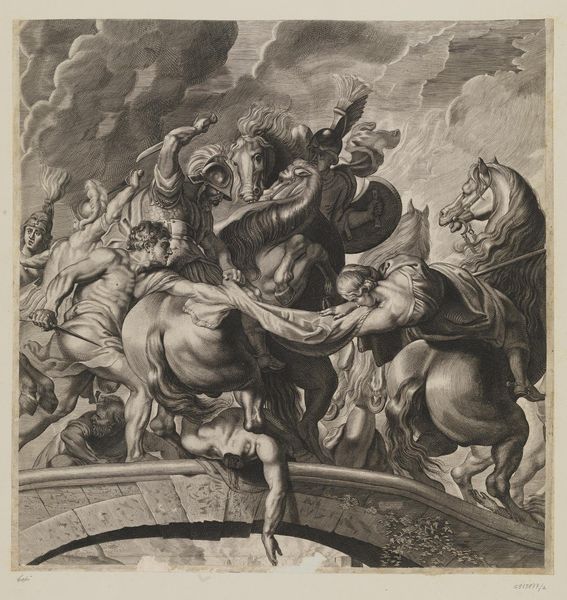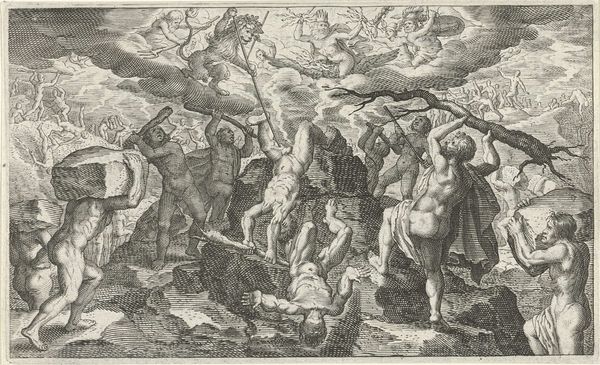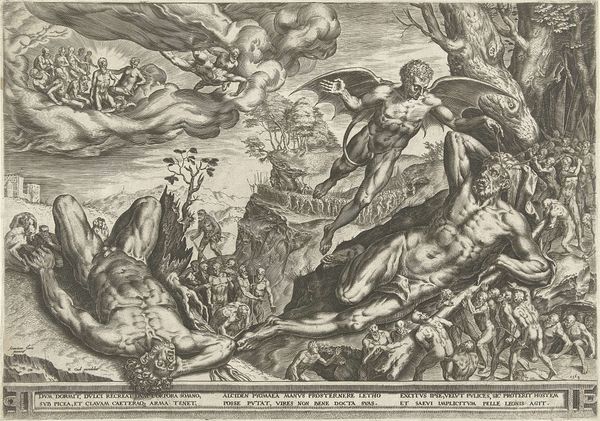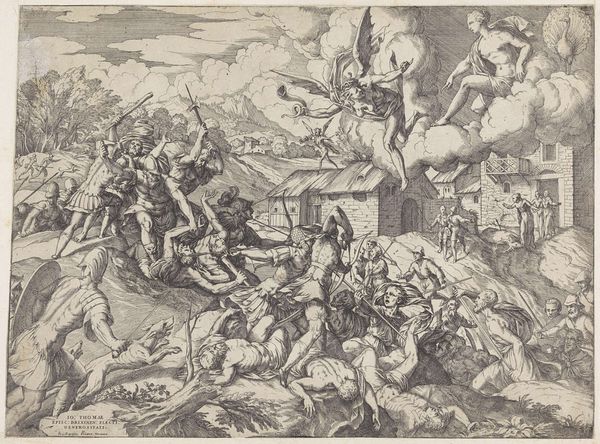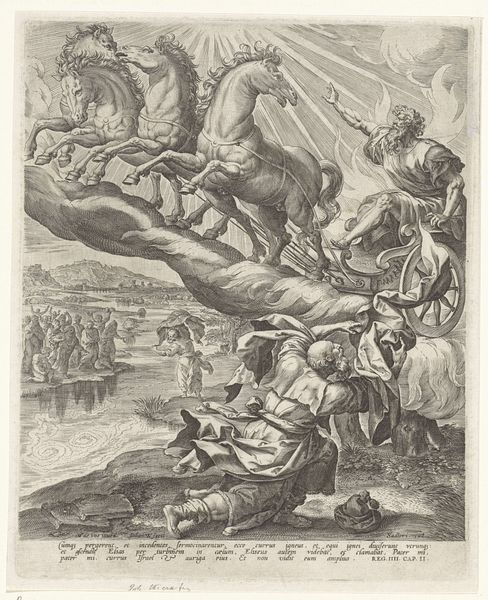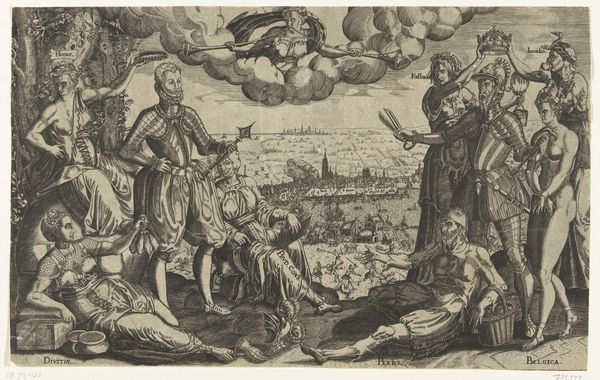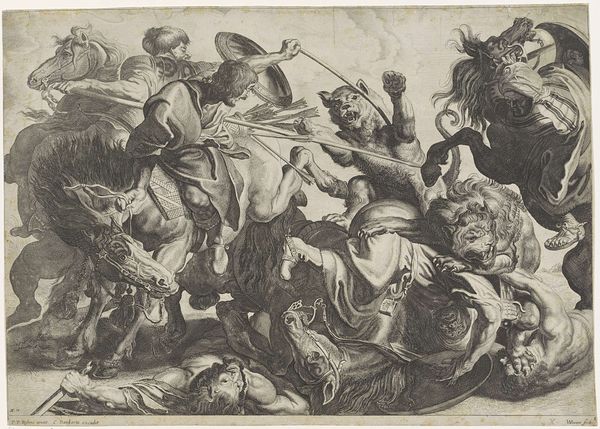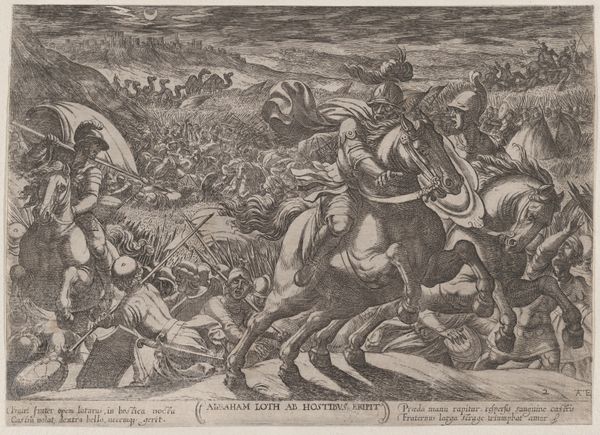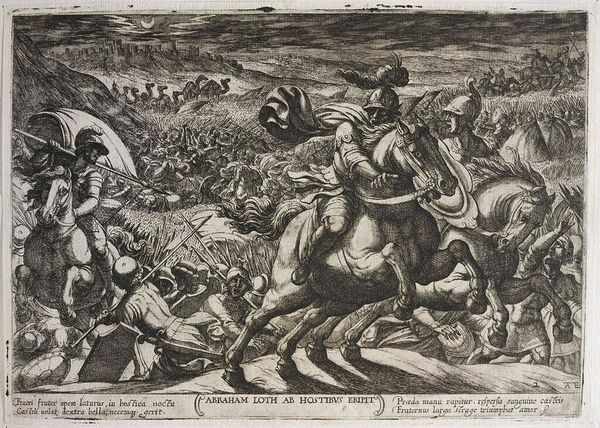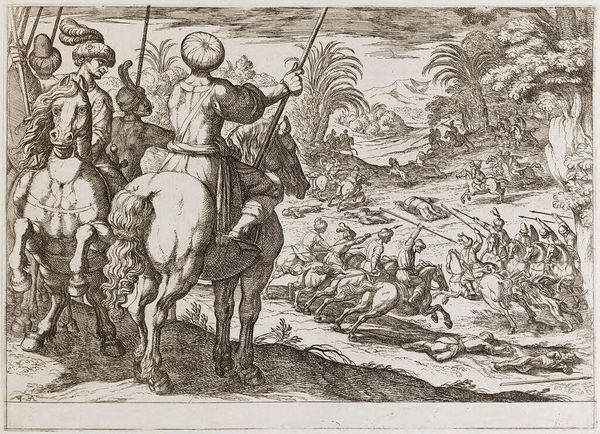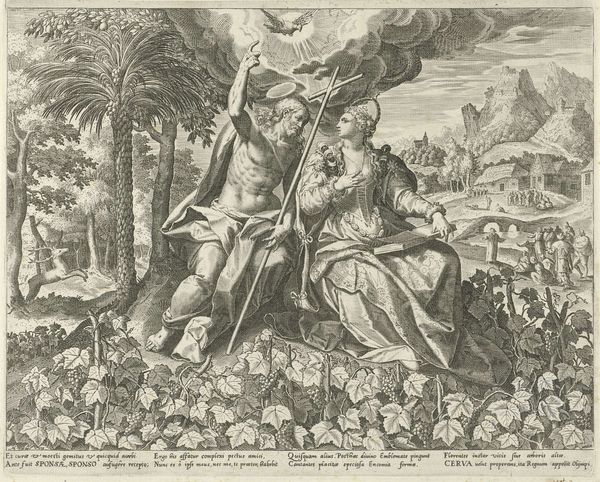
Dimensions: height 232 mm, width 287 mm
Copyright: Rijks Museum: Open Domain
This engraving, made by Cornelis Cort in the Netherlands around 1560-1578, captures the moment when Hercules slays the three-bodied giant Geryon and his dog. The image participates in a long history of classical revival that runs throughout Renaissance art. Northern European artists like Cort looked to ancient sources to demonstrate their knowledge and sophistication, translating these stories into a contemporary visual language. Hercules, as a symbol of strength and virtue, would have been instantly recognizable to Cort’s educated audience. This print, now housed in the Rijksmuseum, also speaks to the growing importance of printmaking as a means of disseminating classical learning and artistic ideas. The circulation of prints allowed artists and patrons to engage with classical themes on a wider scale, contributing to a shared European culture rooted in the past. To understand Cort’s work more fully, scholars consult collections like the Rijksmuseum's print archive, alongside historical texts. By studying the social and cultural contexts in which art is made and circulated, we can appreciate its enduring significance.
Comments
No comments
Be the first to comment and join the conversation on the ultimate creative platform.
